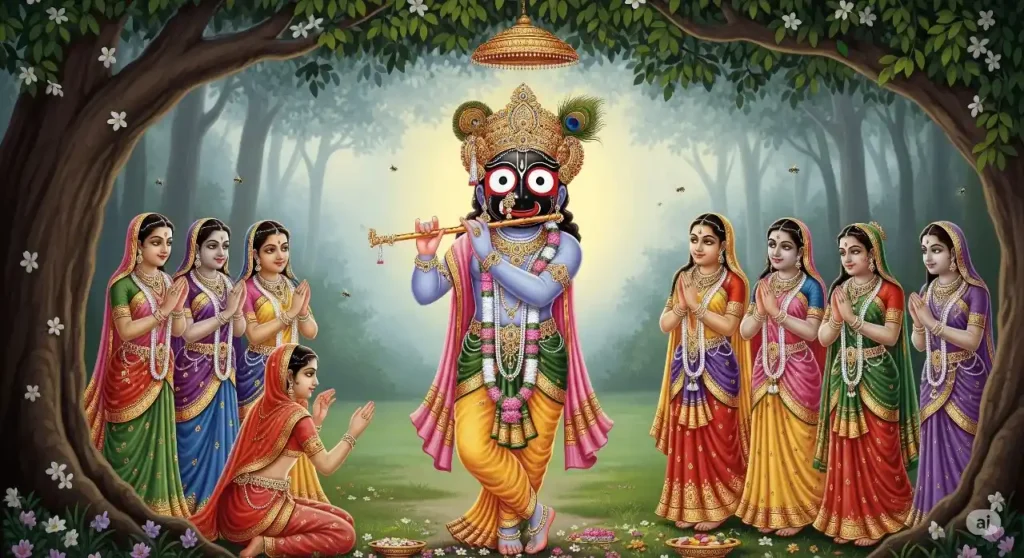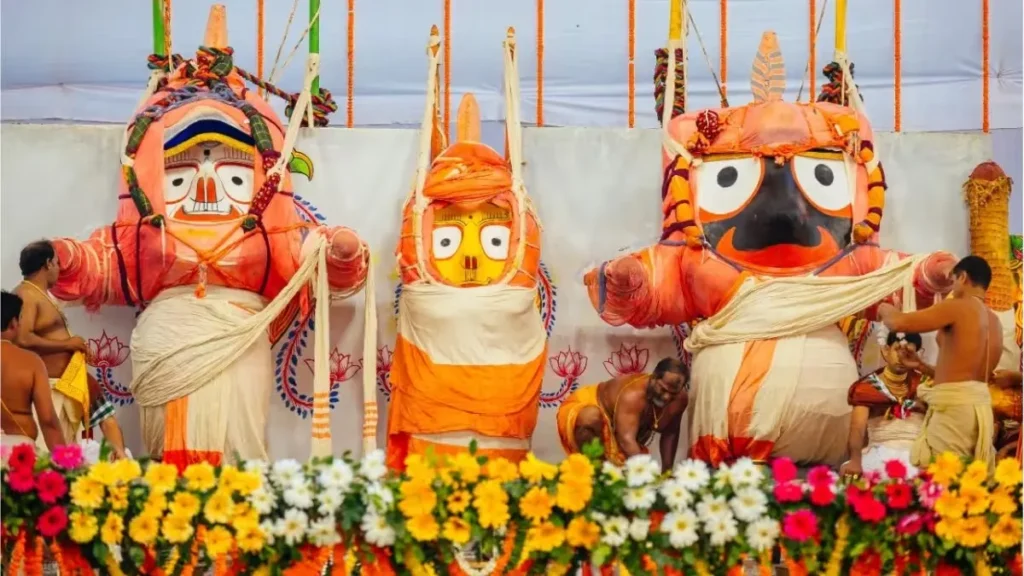
Table of Contents
Understanding the Blog’s Purpose: A Devotional Dive into Jagannathastakam
In the spiritual heart of Odisha, the majestic Lord Jagannath reigns supreme. Not only does he reside in the grand temple of Puri, but he also lives in the hearts of countless devotees. Furthermore, one powerful expression of this devotion is the Jagannathastakam—a sacred Sanskrit hymn of eight verses, filled with divine imagery and spiritual depth.
Through this blog, we will first uncover the meaning of each verse. In addition, we will explore the deeper significance of this astakam. As a result, we will understand why it holds a timeless place in Jagannath worship.
What is Jagannathastakam?
Jagannathastakam literally translates to “Eight Verses on Lord Jagannath.” Furthermore, each quatrain (four-line verse) paints a vivid picture of Lord Jagannath’s divine form, his playful leelas, and his boundless grace. Above all, it is a beautiful blend of poetic artistry and devotional surrender.
Authored by Mahamedhanandanath Saraswati, in addition, this astakam is a heartfelt prayer that culminates each verse with the line:
“Jagannathah Swami Nayanapathagami Bhavatu Me”May the Lord of the Universe, Jagannath, be always visible in the path of my eyes.
Verse-by-Verse Interpretation: A Closer Look at Jagannathastakam
Creator, Protector, Destroyer — The Supreme Power
“You are the First, the Last… You create, protect, and destroy the universe like a game.”
This verse, in fact, portrays Lord Jagannath as the eternal cosmic power—the source and end of everything. Moreover, he exists beyond time and space, yet remains compassionately close to his devotees.The Flute-Playing Krishna in Vraja
“In the Kadamba forest, adorned with flowers, playing your flute, you delight the gopis with your side-long glances.”
In this verse, Lord Jagannath appears in his Krishna form, and thus evokes the sweetness of Vrindavan. His tribhanga (threefold bending) posture and divine music, likewise, captivate all beings.Joyful Wanderer in Vrindavan’s Forest
“Amidst blooming bowers and buzzing bees, with cowherd friends, you shine in Vrindavan.”
This verse, in particular, reflects the Lord’s carefree and joyous nature. It reminds us that spiritual life can also be full of divine play and beauty.Guardian of the Virtuous and Slayer of Evils
“You destroy the enemies of the Yadu clan and roam along Yamuna’s banks thinking about the good of all beings.”
This verse, moreover, balances the Lord’s playful nature with his fierce protection of dharma and the righteous.Lord of the Skies and Giver of Liberation
“You fly on Garuda, dwell in the hearts of the virtuous, wear a golden girdle, and lead all to liberation.”
This captures his grandeur and benevolence. He transcends all worlds but is deeply personal to every soul.The Royal Deity on the Divine Throne
“With four arms, wielding divine weapons, you shine in the divine assembly beside Aniruddha, Balarama, and Satyaki.”
This verse, in addition, celebrates the royal form of Jagannath as Vishnu or Krishna, seated in celestial courts.Slayer of Demons and Upholder of Dharma
“You destroy tyrants like Kamsa and Mura, protect the universe, and defend the pious.”
This verse, indeed, reminds us of Jagannath’s strength and his role as the cosmic protector.Rama Form of the Lord Along the Sarayu River
“Along with Bharata, Lakshmana, and Shatrughna, you played on the banks of Sarayu with bow and arrows in hand.”
The final verse, similarly, connects Lord Jagannath to Rama—another avatar of Vishnu—showing the Lord’s many divine forms.People Also Ask (FAQs)
1. What is the meaning of Jagannathastakam?
2. Who wrote Jagannathastakam?
3. Why is Jagannathastakam significant in Jagannath worship?
4. Can non-Odia devotees recite Jagannathastakam?
5. When should Jagannathastakam be chanted?
The Devotional Essence of Jagannathastakam
What makes Jagannathastakam special goes beyond its structure or style. More importantly, it carries deep emotion. Each verse describes the Lord’s beauty, strength, and kindness. Above all, it shows that true devotion comes from a yearning heart, not just from rituals or temples.
Whether you recently discovered Jagannath worship or followed it for years, moreover, you can deepen your spiritual journey by reading and reflecting on these verses.Let Jagannath Be Always in Your Sight
To conclude, the line “Jagannathah Swami Nayanapathagami Bhavatu Me” is more than a prayer. It’s a desire to keep the Lord always in sight—not just physically but in thought, heart, and spirit.
So next time you bow your head before Lord Jagannath, whisper these verses. Feel the divine connection. Let the astakam guide your path to love, surrender, and liberation.Want to feel the divine presence of Lord Jagannath every day?
Then begin by reciting the Jagannathastakam. Furthermore, share this blog with fellow devotees. In addition, bookmark it for daily inspiration. Together, let’s spread the glory of Jagannath far and wide.


Pingback: Udayagiri & Khandagiri – Discover Odisha’s Ancient Jain Legacy
Pingback: Chilika Lake- Asia’s Largest Saltwater Lagoon & Biodiversity Hub